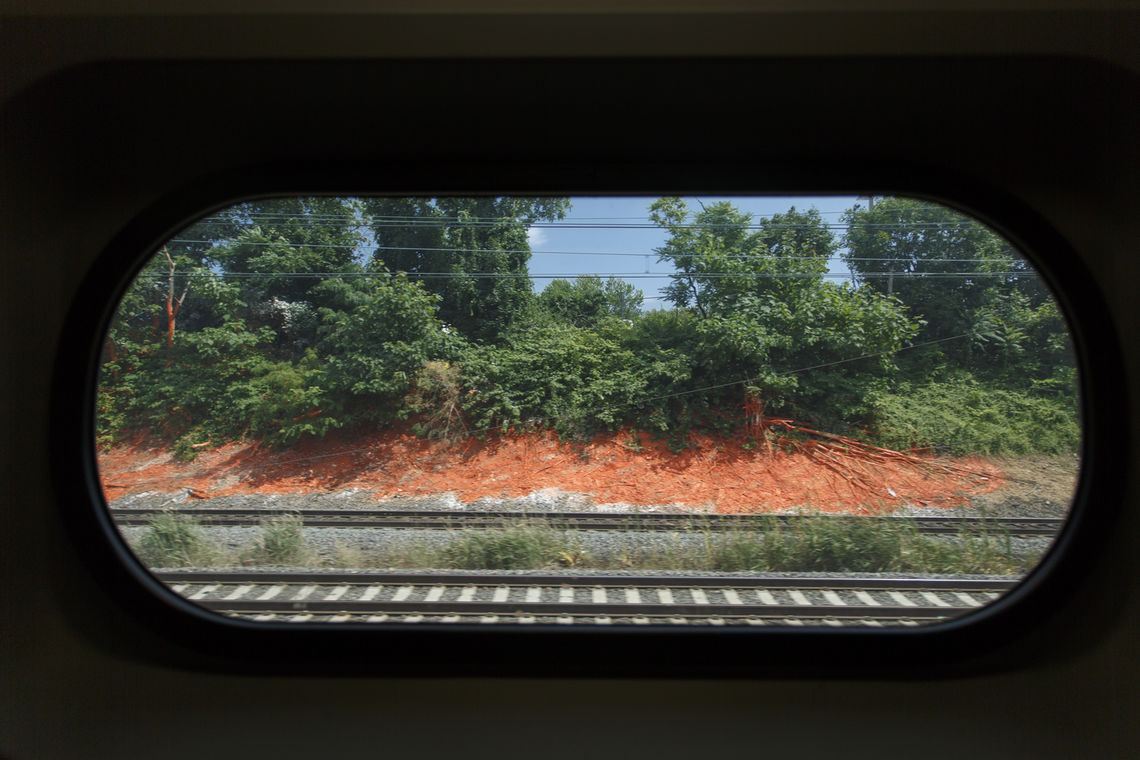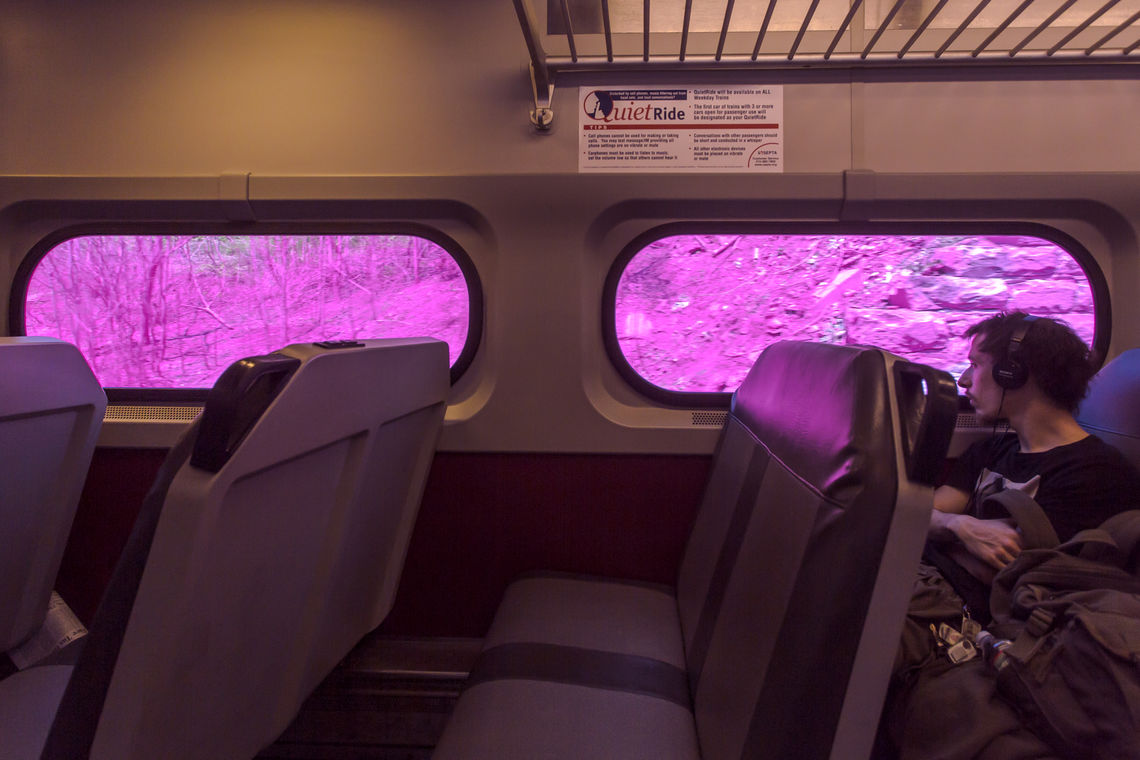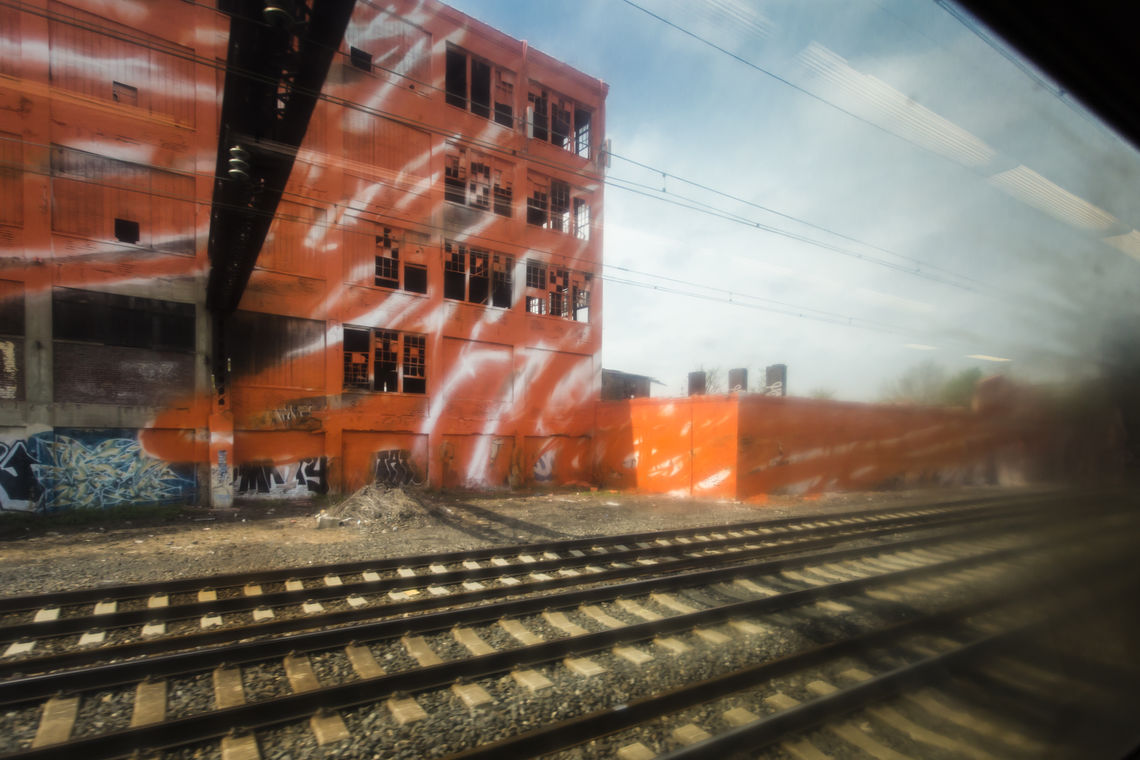psychylustro02

If you have traveled the Northeast Corridor to or from Philadelphia recently, you’ve probably noticed something quite unique among the landscape. It’s called psychylustro – seven eye-catching art installations commissioned by the City of Philadelphia Mural Arts Program and created by German artist Katharina Grosse in 2014. Extremely colorful, these massive swaths of paint cover the post-industrial blight that characterize this stretch of the corridor, bringing greater awareness of the space and surroundings for the nearly 34,000 daily passengers.
The City of Philadelphia Mural Arts Program (Mural Arts) is the nation’s largest public art program, dedicated to the belief that art ignites change. For over 30 years, Mural Arts has united artists and communities through a collaborative process, rooted in the traditions of mural-making, to create art that transforms public spaces and individual lives. Mural Arts engages communities in 50–100 public art projects each year, and maintains its growing collection through a restoration initiative. Core Mural Arts programs, such as Art Education, Restorative Justice, and Porch Light, yield unique, project-based learning opportunities for thousands of youth and adults.
psychylustro

More on psychylustro from an interview with Project Curator Elizabeth Thomas:
How did you become involved?
First, Mural Arts approached the artist, Katharina Grosse, to visit and develop a project in Philadelphia. I was brought on before her initial site visit, so together we could find a situation that took advantage of the strengths of both Mural Arts’ and Katharina’s work.
What were some challenges related to the project?
The interesting thing about the railway corridor is how many different entities own the space that looks, to an outsider, like one space (a single bridge can have multiple owners, for example, from the wall at ground level to the upper span). So, after identifying the sites we wanted to paint, we went through the process of vetting them with Amtrak and other entities for both permissions and feasibility. Some sites we didn’t pursue because they didn’t allow for access of lifts and equipment for us to reach the parts of the wall we wanted to paint. In the end, we needed permission from multiple agencies and private property owners, a complicated process, but one that was met with positive responses from most everyone we approached.
How does the community factor in with large-scale abstract installations like psychylustro?
Well, there are lots of different ways to think about the word “community.” In reality, there were at least 100 people who were intimately involved in making this happen. In terms of the way Mural Arts has typically worked, an artist will usually go into a community to meet with people and then make a work in response to their concerns. This project was very different as it was crafted much more purposefully as the vision of the artist, curator, Mural Arts, and other partners for the community. This is not at all atypical of how public projects are conceived generally, but it was a bit of an experiment for Mural Arts. In this case, we were all interested in what the possibilities were for imagining a new kind of public art experience, one that took advantage of the existing system of train travel to create something unprecedented in scale and in experience for a very broad audience, within the patterns of their daily life. We were also very interested in how an abstract work would take advantage of these viewing conditions to open up a conversation about abstraction and its relationship to the world itself, not as an isolated phenomenon confined by the edges of a canvas.
psychylustro03

What is the value of bringing the abstract into the everyday?
I really believe that there are no better or worse forms of art for public space. I believe that thoughtfully considered, original, site-responsive works in all forms should be encouraged and supported. In my opinion, the form isn’t the point, the intent is. So, the abstract as a form could be deployed to all different ends (as we’ve seen in the way that public monuments have generally shifted from representational to abstract, the Vietnam Veteran’s Memorial being the prime example of this shift). I think abstraction for Katharina opens a way of seeing the world without limits, and a world that can be made and remade. I hope that some of that spirit comes across in the project.
What were the considerations for creating a site-specific project that was meant to be experienced through a small train window?
We thought as much about the viewing conditions of the window per se as the ideas of speed and continuous movement, since this really is an unprecedented viewing situation for a work of art (we could find no real examples of something on this scale, conceived as a total artwork, having happened before). So, I wouldn’t say we gave privilege to the idea of the window, but instead tried to think about all the different dimensions of this viewing experience in terms of the rhythm of the work and its placement, the scales of verticality and horizontality, the idea of soundtracks for viewing, the relationship of each individual painting at the seven sites to the whole experience, and the relationship of what was painted and not painted along the way.
For more information, call 215-685-0750 or visit www.muralarts.org. Follow along on social media: Twitter, Instagram, YouTube, and Facebook.